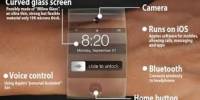Scientists have “digitally unwrapped” an ancient Egyptian mummy to show the face of a 3,500-year-old pharaoh while preserving his meticulously maintained facemask (and keeping any ancient curses at bay). Researchers from the University of Cairo describe how they scanned the mummy of King Amenhotep I, who ruled from 1525 to 1504 BCE and was venerated as a deity after his death, and what they learned about him in a paper published in the journal Frontiers in Medicine.
The well-known mummy, which recovered in modern times in 1881 at the archaeological site Deir el Bahari in southern Egypt, was decked with flower garlands and had a realistic mask inlaid with bright stones.
Unlike many other mummies that were overzealously examined in the 19th and 20th centuries, restorers briefly opened King Amenhotep I’s body in the 11th century to repair damage by would-be tomb robbers; the mummy remained shrouded for the following 3,000 years.
Archaeologists had traditionally been hesitant to touch King Amenhotep I’s mummy due to his beautiful linen wrapping and well-preserved facemask. CT imaging, on the other hand, now allows researchers to take a non-invasive look inside without disturbing the delicate body. Not only has this imaging revealed intriguing details about the pharaoh’s physical appearance, but it has also thrown light on the pharaoh’s life and death.
“By digitally unwrapping, the mummy and ‘peeling off’ its virtual layers – the facemask, the bandages, and the mummy itself – we were able to study this well-preserved pharaoh in unprecedented detail,” said Dr. Sahar Saleem, professor of radiology at Cairo University’s Faculty of Medicine and radiologist for the Egyptian Mummy Project.
“We discovered that Amenhotep I died when he was around 35 years old. She described him as “about 169 cm tall, circumcised, and with nice teeth.” “He wore 30 amulets and a one-of-a-kind golden girdle with gold beads within his wrappings.” “Amenhotep I had a narrow chin, a little narrow nose, curling hair, and somewhat projecting upper teeth, much like his father,” Saleem said.
The intestines appear to have been taken from the corpse by mummifiers, but the heart and brain appear to have remained intact. Because the CT scans revealed no evidence of sickness or wounds, the researchers were unable to determine the cause of death. King Amenhotep, I was the 18th dynasty’s second pharaoh. His father, Ahmose I, was the first monarch of this dynasty, having successfully unified Egypt by driving the invading Hyksos out of the Nile Delta. This time is considered to be ancient Egypt’s “Golden Age,” marked by affluence, peace, and tremendous cultural advancements.
Since the Egyptian Antiquity Ministry Research began in 2005, the team behind this current project has analyzed 40 royal mummies from the New Kingdom. The researchers believe that this is only the beginning of what cutting-edge imaging can do for our understanding of ancient Egypt and beyond. “We demonstrate that CT imaging may be utilized advantageously in anthropological and archeological investigations on mummies, including those from different civilizations, such as Peru,” the researchers conclude.
















